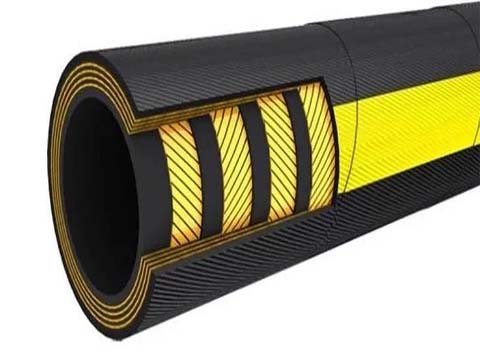Composition of automobile hydrogenation liner
A rubber composition containing hydrogen or carbon is used to make an automobile hydrogenation hose. Its inner diameter is typically three to 20 mm, and its wall thickness is three to five mm. It can be used for filler, breathing, and evaporation applications. Although the type of rubber used in this hose is not specified, it is recommended that butadiene or isoprene be used.
The rubber composition used in this hose must be highly impermeable to fuel to prevent fuel leakage from the automobile. These hoses are commonly made of NBR, an acryliconitrile-butadiene rubber, or a mixture of NBR and PVC.
Hydrogenated nitrile rubber, which is highly resistant to heat, oil, and ozone, is widely used in the automotive industry. It is resistant to corrosion and clogging in fuel piping.
What are the new energy transport hoses?
Green hydrogen is produced by using either C or N as a carrier. Green hydrogen represents stored solar energy. This energy comes from renewable energy sources like wind and solar power. Hydrogen embrittlement is one of the greatest challenges to hydrogen transportation. This affects steel pipelines as well as containment vessels.

Manufacturer of hydrogenation hose
Hydrogenation refers to the process of producing liquid hydrocarbons from hydrogen. It can bring many benefits to the energy sector. In addition to the numerous uses in the energy sector, hydrogenation is also a great choice for marine applications. It is ideal for transporting crude oil and other flammable liquids.
Hydrogenation hoses can withstand high pressure and temperatures. The inner and outer tubes are made from vulcanized hydro-NBR rubber compound. This material is extremely resistant to heat and oil. The hydrogenation rate must be at least 83% for this material to be suitable for marine applications.
You can make hydrogenation hoses from many materials, including rubber and polyethylene. Reinforced rubber is the most popular material. The outer surface of the tube is covered with reinforcing yarn. The inner tube is comprised of two layers: an inside layer 17 and an outer layer 19 made of vulcanized diene rubber or hydro-NBR.
This article is fantastic! The insights provided are very valuable. For those interested in exploring more, check out this link: LEARN MORE. Looking forward to the discussion!
I don’t think the title of your article matches the content lol. Just kidding, mainly because I had some doubts after reading the article. https://www.binance.com/es/register?ref=T7KCZASX
Your article helped me a lot, is there any more related content? Thanks!
Thank you for your sharing. I am worried that I lack creative ideas. It is your article that makes me full of hope. Thank you. But, I have a question, can you help me?
Can you be more specific about the content of your article? After reading it, I still have some doubts. Hope you can help me.